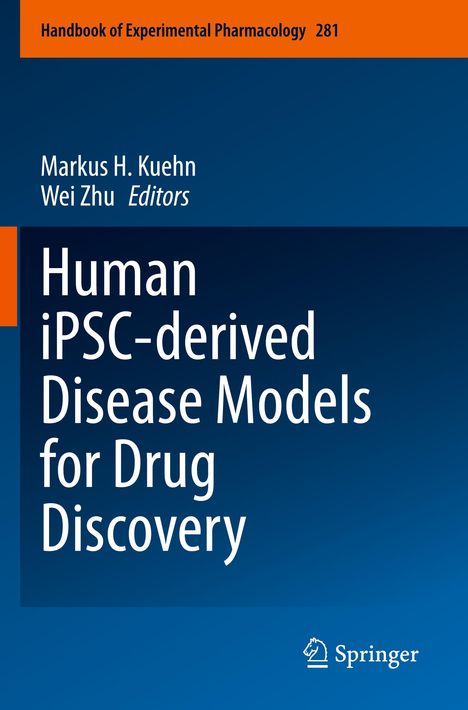Human iPSC-derived Disease Models for Drug Discovery, Kartoniert / Broschiert
Human iPSC-derived Disease Models for Drug Discovery
(soweit verfügbar beim Lieferanten)
- Herausgeber:
- Markus H. Kuehn, Wei Zhu
- Verlag:
- Springer, 11/2024
- Einband:
- Kartoniert / Broschiert, Paperback
- Sprache:
- Englisch
- ISBN-13:
- 9783031423512
- Artikelnummer:
- 12118314
- Umfang:
- 340 Seiten
- Gewicht:
- 578 g
- Maße:
- 235 x 155 mm
- Stärke:
- 18 mm
- Erscheinungstermin:
- 24.11.2024
- Hinweis
-
Achtung: Artikel ist nicht in deutscher Sprache!
Weitere Ausgaben von Human iPSC-derived Disease Models for Drug Discovery |
Preis |
|---|
Klappentext
Since their development a decade ago, human induced pluripotent stem cells (iPSC) have revolutionized the study of human disease, given rise to regenerative medicine technologies, and provided exceptional opportunities for pharmacologic research. These cells provide an essentially unlimited supply of cell types that are difficult to obtain from patients, such as neurons or cardiomyocytes, or are difficult to maintain in primary cell culture. iPSC can be obtained from patients afflicted with a particular disease but, in combination with recently developed gene editing techniques, can also be modified to generate disease models. Moreover, the new techniques of 3 Dimensional printing and materials science facilitate the generation of organoids that can mirror organs under disease conditions. These properties make iPSC powerful tools to study how diseases develop and how they may be treated. In addition, iPSC can also be used to treat conditions in which the target cell population has beenlost and such regenerative approaches hold great promise for currently untreatable diseases, including cardiac failure or photoreceptor degenerations.
Biografie (Wei Zhu)
WEI ZHU received his PhD in solid state science from Pennsylvania State University. He was a visiting assistant professor at North Carolina State University before he joined AT&T Bell Laboratories (later Lucent Technologies Bell Laboratories) in 1993. He is currently a member of technical staff in the Applied Materials Research Department at Agere Systems, formerly the microelectronics group of Lucent Technologies, where he specializes in carbon-based materials and applications. His interests include novel cold cathode materials and devices, nanoscale materials and technology, MEMS, and optical waveguide materials and devices. He holds more than thirty patents and has coauthored over forty papers. He organized the first Materials Research Society symposium on vacuum microelectronics in 1998. He is a member of the Materials Research Society and the Optical Society of America.

